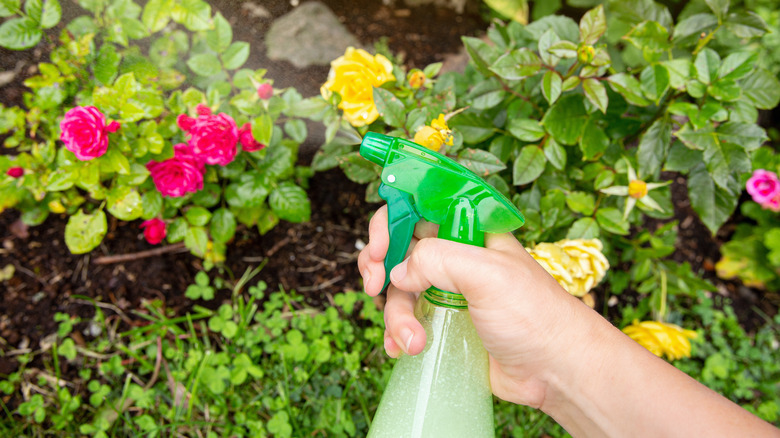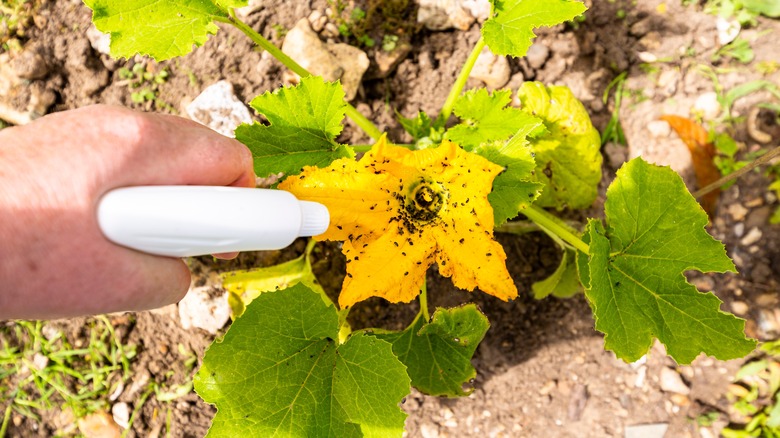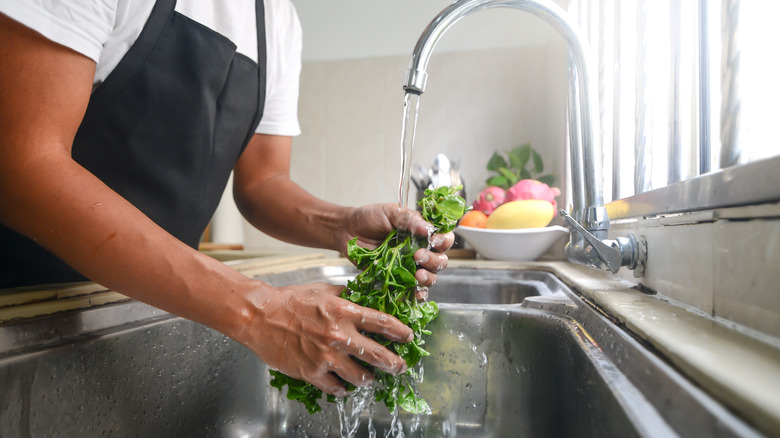Is Castile Soap Good Or Bad For Fertilizing Your Plants?
No doubt you've probably seen a bottle of castile soap in the grocery store; one of the most popular brands comes from Dr. Bronner's, which claims itself to be an 18-in-1 soap product. Fans of the soap note that it can be used as a household washing-up soap, for the body, and even outdoors in the garden! That's because castile soap is a "true soap," meaning it is made from all-natural, vegetable fat-based, and biodegradable ingredients, unlike other soaps that use synthetic ingredients such as parabens and sulfates, which pushes them into the detergent category. The gentle formula of castile soap has many uses in the garden, and some folks even use it as a fertilizing aid. But is castile soap actually beneficial to use as a fertilizer?
Castile soap is not a fertilizer in and of itself. Fertilizers contain essential nutrients for plant growth, particularly nitrogen, phosphorus, and potassium. Liquid castile soap, on the other hand, such as Dr. Bronner's, is made from plant oils, which means it won't offer a ton of nutrients on its own. Some believe castile soap does spur soils and fertilizers to release nutrients better, but this hasn't been officially documented by a scientific study. Basically, castile soap isn't a good fertilizer swap, but you can create other all-natural homemade fertilizers with food scraps like eggshells, coffee grounds, and (unsalted) pasta water if you're trying to skip traditional fertilizers.
Eliminate plant pests with castile soap
If you've used castile soap to fertilize your plants, don't stress, because while it isn't a fertilizer, it is a helpful gardening tool and can improve the health of your plants in other applications. The idea of putting soap of any kind on a living plant can seem off-putting, but castile soap actually won't damage your plants because it's biodegradable and nontoxic to people and plants alike.
Castile soap is more popular as a synthetic chemical-free insecticide and fungicide. If you notice you have insect invaders, you can try diluting liquid castile soap with water in a spray bottle to eliminate them — this tip can be especially helpful if you're moving buggy plants indoors for the winter. Some gardeners use a combination of castile soap, baking soda, and water to combat powdery mildew, a fungal infection that coats plant leaves in a dusty white or gray film. You can also just use a bit of castile soap and water to polish dusty houseplants.
Tips for using castile soap on plants
While we've already established that castile soap is non-toxic and safe to put on plants, there are a few things to keep in mind when using soap in the garden. For one, be sure you reach for authentic, all-natural castile soap. Soaps that describe themselves as antibacterial may seem like a good choice — after all, who wants bacteria on their plants? But these often contain harsh chemicals that can hurt the plant and even you, according to the FDA. If you apply it on an edible plant like a vegetable or fruit, you might end up consuming it, which definitely isn't ideal.
In that same vein, pay attention to the fragrance of the soap you're using. Peppermint is a common scent for castile soaps, and as an added advantage, peppermint repels rabbits. However, the aroma of the soap can leach onto your food, so it's best to avoid spraying this soap directly onto the edible parts of the plant and stick to the soil, roots, leaves, and stem. If you need it on the actual fruit or veggie, be sure to rinse the plant very thoroughly before eating or opt for unscented soap.


